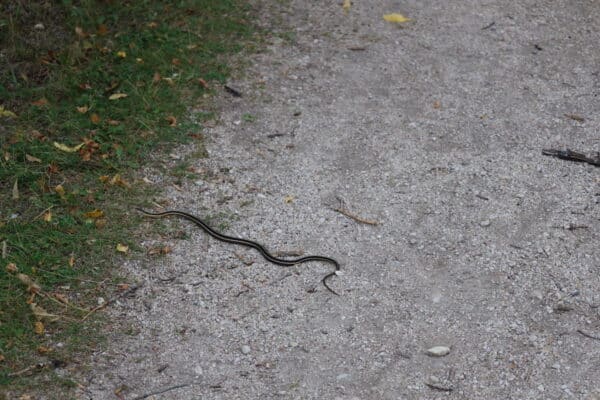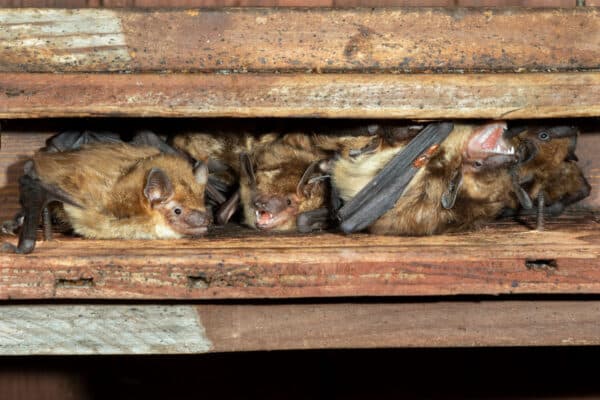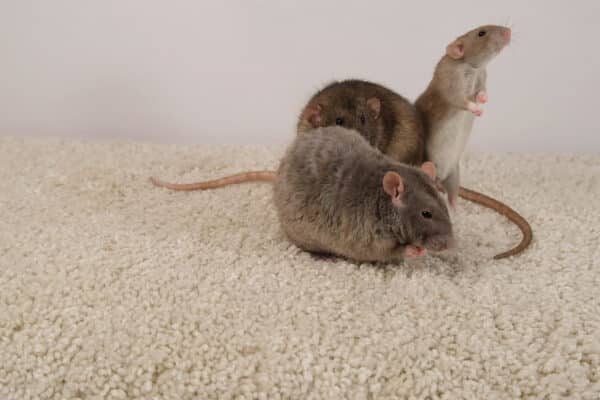
When buzzing insects make themselves at home around your property, it’s easy to assume they’re all the same. But not all stinging insects are created equal—and understanding the difference between a honeybee hive and a wasp nest is crucial for safety, pest control, and even environmental protection.
At Covenant Wildlife, we often get calls from homeowners unsure of what type of stinging insect they’re dealing with. In this guide, we’ll explain how to tell the difference between honeybee hives and wasp nests, why it matters, and what to do if you find one on your property.
Why It’s Important to Know the Difference
Before we get into identification, let’s talk about why it matters. Honeybees and wasps may look and behave similarly at first glance, but they play very different roles in the ecosystem and require different approaches for safe removal.
- Honeybees are protected in many areas. Because they are essential pollinators, honeybee colonies are typically relocated rather than exterminated.
- Wasps can be more aggressive. Some wasp species, like yellow jackets, are territorial and more likely to sting when threatened.
- Treatment strategies differ. Removing a wasp nest involves different techniques and safety considerations compared to relocating a honeybee hive.

Physical Differences: Honeybees vs. Wasps
Body Structure
- Honeybees are generally plump and hairy, with fuzzy bodies that help them collect pollen. They are usually golden brown with black stripes.
- Wasps are slender and smooth-bodied, with a narrow waist and shiny appearance. Their coloration is often brighter, with more distinct black and yellow patterns.
Behavior
- Honeybees are usually docile unless directly threatened. They’re busy pollinating flowers and gathering nectar.
- Wasps are predators and scavengers. They may be more aggressive, especially around food, sugary drinks, or if their nest is disturbed.
Flight Patterns
- Honeybees fly in a calm, steady manner and are frequently seen hovering around flowers.
- Wasps move more erratically and may hover near food or trash looking for protein or sugar sources.
Honeybee Hives: What to Look For
Appearance of the Hive
Honeybee hives are typically built from wax that the bees produce. They have a very distinct appearance, consisting of hexagonal wax cells arranged in combs. The hive might be enclosed in a hollow tree, inside a wall, or occasionally hanging from a sheltered area like under eaves or inside sheds.
Location Preferences
- Hollow trees
- Wall voids
- Chimneys
- Inside attics
- Beekeeping boxes (for managed colonies)
Signs You Have a Honeybee Hive
- Continuous buzzing sound near a wall or roof
- A stream of bees entering and exiting a single hole or crack
- Wax combs seen inside structures
- Pollen carried on bees’ legs
If you spot these signs, call a professional. Never attempt to remove a honeybee hive on your own because improper handling can harm the bees and be dangerous to you.
Wasp Nests: What to Look For
Types of Wasps and Their Nests
There are many species of wasps, but some of the most common in the Southeast include:
- Paper Wasps: They build open, umbrella-shaped nests usually attached to eaves, decks, or light fixtures. The nest has visible cells.
- Yellow Jackets: These wasps build enclosed nests underground or inside wall cavities. You may see them entering a small hole in the ground or siding.
- Hornets: A type of wasp that builds large, football-shaped paper nests often found in trees or under overhangs.
Appearance of the Nest
Wasp nests are usually made of a papery substance created from chewed wood and saliva. Unlike the waxy appearance of a bee hive, wasp nests are grey, layered, and have a brittle texture.
Signs You Have a Wasp Nest
- Large numbers of wasps flying in and out of a single point
- Visible paper-like structure on trees, soffits, or structures
- Increased wasp activity around food or trash
Wasps can be aggressive, especially when guarding their nest. Always use caution and avoid disturbing them.
Key Differences at a Glance
| Feature | Honeybee Hive | Wasp Nest |
| Insect Type | Fuzzy, golden-brown bees | Smooth, bright-colored wasps |
| Nest Material | Wax combs | Papery structure |
| Nest Location | Inside trees, walls, chimneys | Hanging under eaves, trees, underground |
| Behavior | Gentle unless provoked | Often aggressive and territorial |
| Purpose | Pollinators, nectar collectors | Predators and scavengers |
| Removal Method | Relocation (often by beekeepers) | Extermination or professional removal |
Dangers of DIY Removal
Whether it’s bees or wasps, removing a nest on your own is not recommended. Here’s why:
- Stings can be dangerous, especially for those with allergies or in cases of multiple stings.
- Wasp nests may be larger than they appear, especially underground or inside walls.
- Bee colonies are often protected, and harming them can have environmental and legal consequences.
- Incorrect removal can make the situation worse, scattering the insects or driving them deeper into your home.
Calling a trained wildlife or pest professional is always the safest and most effective solution.
What to Do If You Find a Nest or Hive
If you suspect you have a honeybee hive or wasp nest on your property:
- Stay calm and keep your distance. Don’t swat at them or try to block their entry points.
- Note the location. Try to identify where the insects are coming and going.
- Take a photo if it’s safe to do so. This can help professionals quickly assess the situation.
- Call a licensed wildlife professional. At Covenant Wildlife, we’ll identify the species and provide a safe, humane solution.

How Covenant Wildlife Can Help
At Covenant Wildlife, we provide expert inspection, identification, and removal services for stinging insect infestations in and around your home. Whether you’re dealing with a honeybee hive or a wasp nest, we offer:
- Accurate identification of bees, wasps, hornets, or other flying insects
- Safe, humane honeybee relocation with assistance from local beekeepers
- Professional wasp nest removal using protective gear and targeted treatments
- Preventive advice to reduce the chances of future infestations
- Cleanup and repair for affected areas when needed
We understand how stressful these situations can be and prioritize fast, safe, and environmentally responsible services.
Tips to Prevent Hives and Nests Around Your Home
Preventing stinging insects from settling near your home is always easier than removing them later. Here are a few tips to help:
- Seal cracks and holes in exterior walls and roofs
- Keep food waste and sugary drinks covered outdoors
- Trim trees and bushes away from your home
- Regularly check attics, soffits, and eaves for early signs of nests
- Use natural repellents or hire professionals for annual inspections
In Conclusion
While both honeybees and wasps may buzz around your home, understanding the difference between their hives and nests can help you respond appropriately and safely. Honeybees are essential pollinators that require careful handling and protection, while wasps can pose a more immediate threat due to their aggressive nature.
When in doubt, trust the experts. At Covenant Wildlife, we assess and address stinging insect issues safely and efficiently. Whether you need honeybee relocation or wasp nest removal, we’re here to help protect your home—and the environment.
Contact Covenant Wildlife today for professional inspection and safe removal services!



